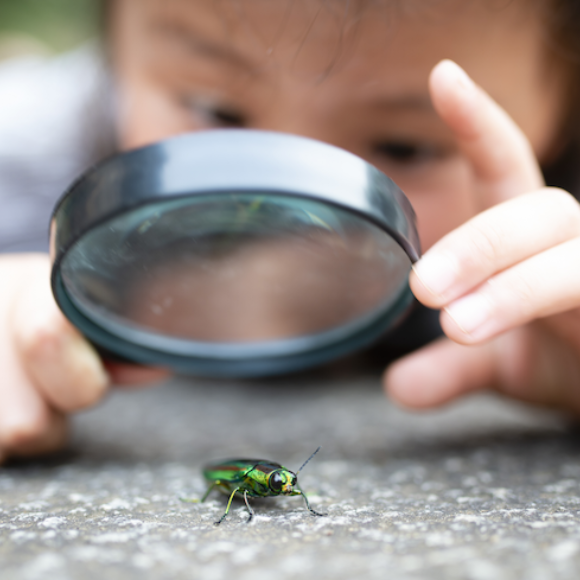
If you are looking for something to entertain the kids over Easter and the school holidays, maybe you could set them to seeing how many living creatures they can find around your home and garden.
Three UQ scientists who share a house in Brisbane have documented more than 1,000 species found in their home and backyard, ranging from birds and lizards through to caterpillars and spiders.
Their findings, published recently in the science journal Ecology, reveal an astounding biodiversity present in suburban landscapes, which according to the researchers far surpassed their expectations.
The housemates – mathematician Matt Holden, ecologist Andrew Rogers and taxonomist Russell Yong – started their survey during the COVID-19 lockdowns in 2020, with a view to identifying as many species as possible over a period of 12 months.
In total, the scientists documented 1,150 unique species of animals, plants and fungi over the 12 months.
“We asked a large number of ecologists and conservation scientists how many species they’d expect to find in this setting and they predicted only 200”, Holden said in a press release.
“But after 60 days of surveying, we’d already discovered 777 species.
“It shows suburban houses and apartments could have far more biodiversity than ever imagined, especially when it comes to insects.”
The idea to conduct the survey came when Rogers was vacuuming cobwebs in his room and wondered how many spiders were living on the property.
“The three of us soon envisioned a plan to comb through the house and backyard in search of other critters that resided alongside us”, Holden said.
The research project identified a wide array of animals, including 436 moth and butterfly species, 56 different spiders, eight types of reptiles and 56 birds. Among the birds were tawny frogmouths, kookaburras, blue-faced honeyeaters, rainbow lorikeets, spotted doves and the white ibis.
“Blue-tongued skinks hibernated under the garage, and at night, blue-banded and teddy-bear bees slept in the hedges under the front window,” Holden said.
To their surprise, the researchers also documented three species that had not previously been recorded in Australia’s leading biodiversity database, the Atlas of Living Australia. These included a mosquito species, a sandfly and an invasive flatworm.
While this survey was focused on only one location, the researchers believe that similar biodiversity could be found in many suburban areas across the country.
“It depends on how people tend to their homes and gardens—keeping low-maintenance trees and shrubs and eliminating manicured lawns and pesticides will significantly boost the number of critters found,” Holden said.
“Cities with less varied vegetation may have fewer species. Climate also plays a role.
“That said I’m confident that every home will have many species throughout any city in Australia, especially if you have some shrubs or trees and don’t spray pesticides in your garden”, he concluded.

